CV0-002 : CompTIA Cloud+ (CV0-002) : Part 01
CV0-002 : CompTIA Cloud+ (CV0-002) : Part 01
-
A new browser version has been deployed to all users at a company. After the deployment, users report that they can no longer access the company’s secure time-card system, which is hosted by a SaaS provider. A technician investigates and discovers a security error is received upon opening the site. If the browser is rolled back to the older version, the site is accessible again. Which of the following is the MOST likely cause of the security error users are seeing?
- SSL certificate expiration on the SaaS load balancers
- Federation issues between the SaaS provider and the company
- Obsolete security technologies implemented on the SaaS servers
- Unencrypted communications between the users and the application
- SIMULATION
A company has decided to scale its e-commerce application from its corporate datacenter to a commercial cloud provider to meet an anticipated increase in demand during an upcoming holiday. The majority of the application load takes place on the application server under normal conditions. For this reason, the company decides to deploy additional application servers into a commercial cloud provider using the on-premises orchestration engine that installs and configures common software and network configurations. The remote computing environment is connected to the on-premises datacenter via a site-to-site IPSec tunnel. The external DNS provider has been configured to use weighted round-robin routing to load balance connections from the Internet. During testing, the company discovers that only 20% of connections completed successfully. Review the network architecture and supporting documents and fulfill these requirements:
Part 1:
1. Analyze the configuration of the following components: DNS, Firewall1, Firewall2, Router1, Rouler2, VPN and Orchestrator Server.
2. Identify the problematic device(s).
Part 2:
3. Identify the correct options to provide adequate configuration for hybrid cloud architecture.
Instructions:
If at any time you would like to bring back the initial state of the simulation, please select the Reset button. When you have completed the simulation, please select the Done button to submit. Once the simulation is submitted, please select the Next button to continue.
Simulation
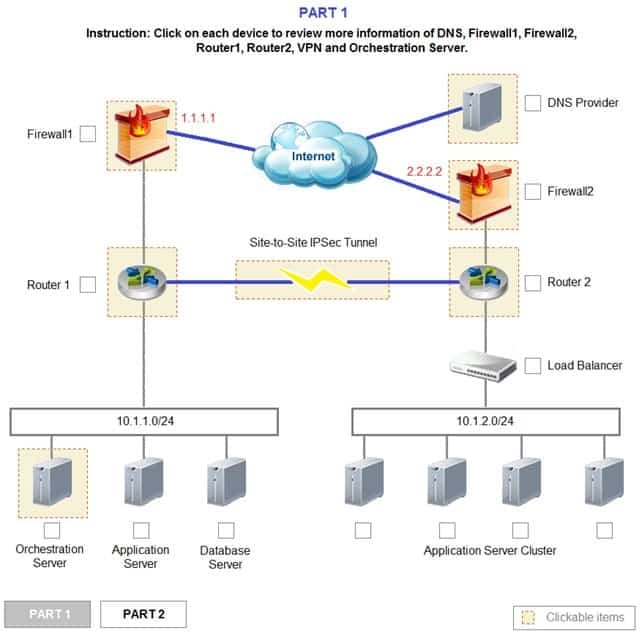
CV0-002 Part 01 Q02 001 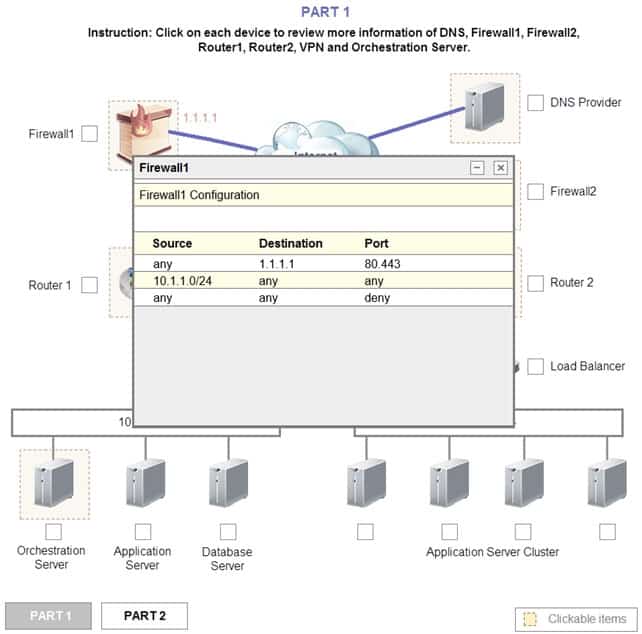
CV0-002 Part 01 Q02 002 
CV0-002 Part 01 Q02 003 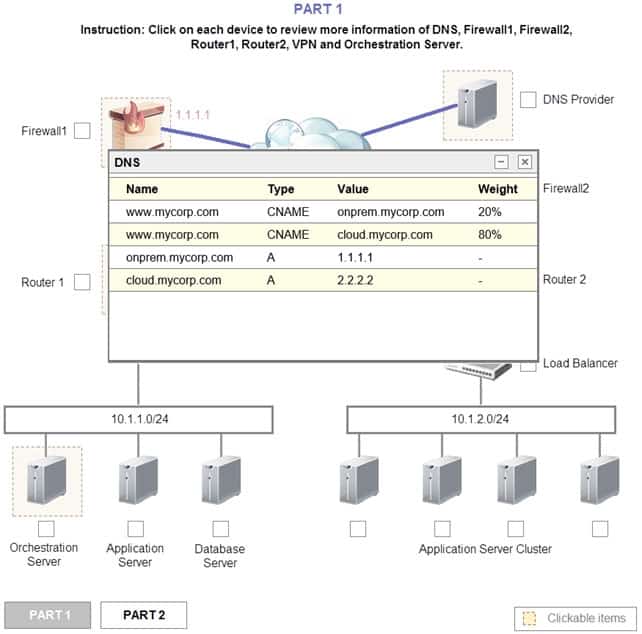
CV0-002 Part 01 Q02 004 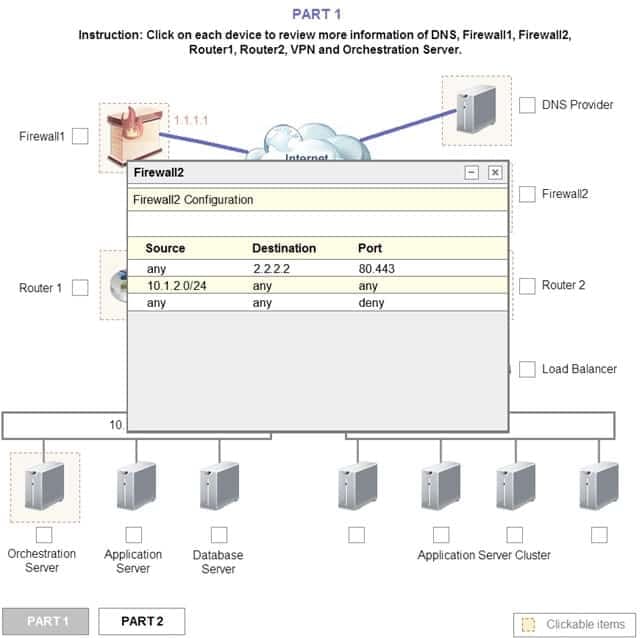
CV0-002 Part 01 Q02 005 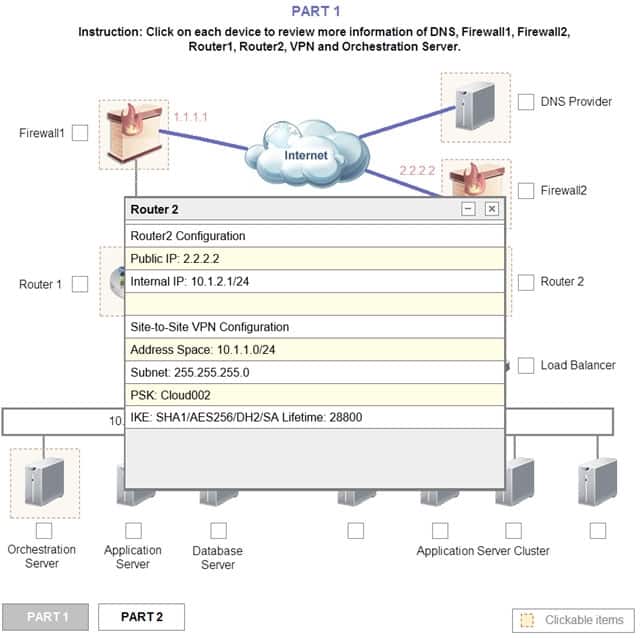
CV0-002 Part 01 Q02 006 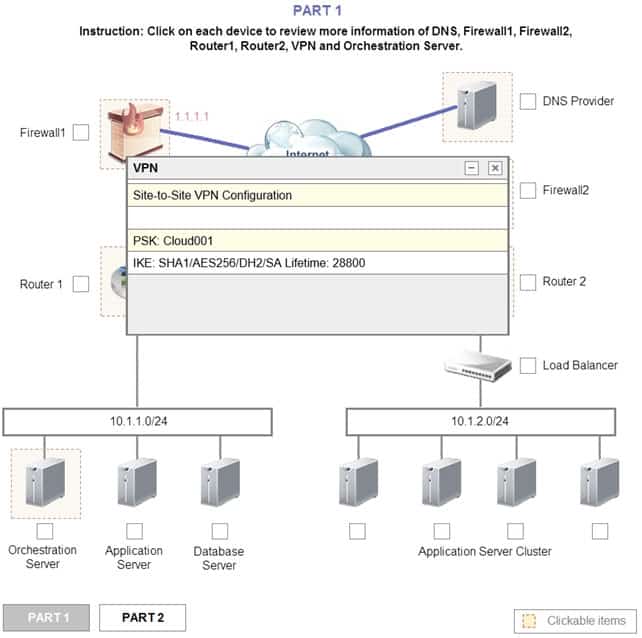
CV0-002 Part 01 Q02 007 
CV0-002 Part 01 Q02 008 - DRAG DROP
A hosted file share was infected with CryptoLocker and now root cause analysis needs to be performed. Place the tasks in the correct order according to the troubleshooting methodology.
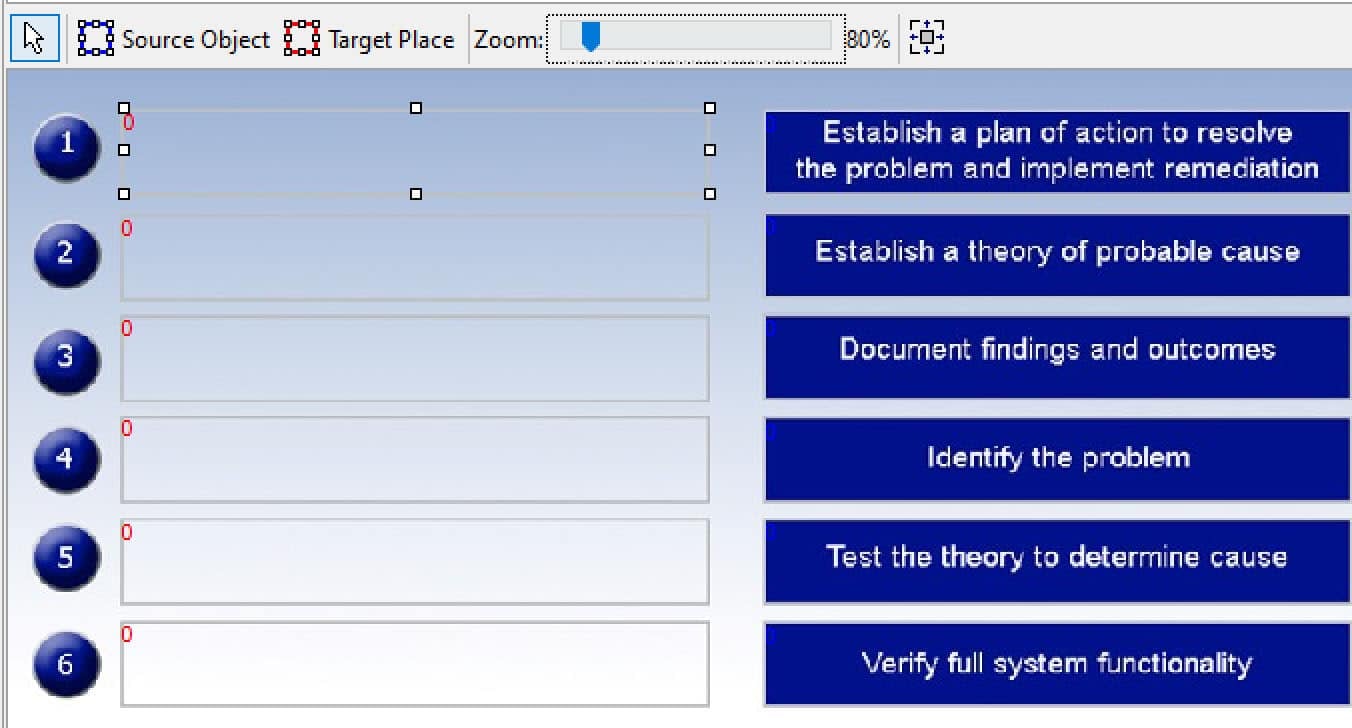
CV0-002 Part 01 Q03 009 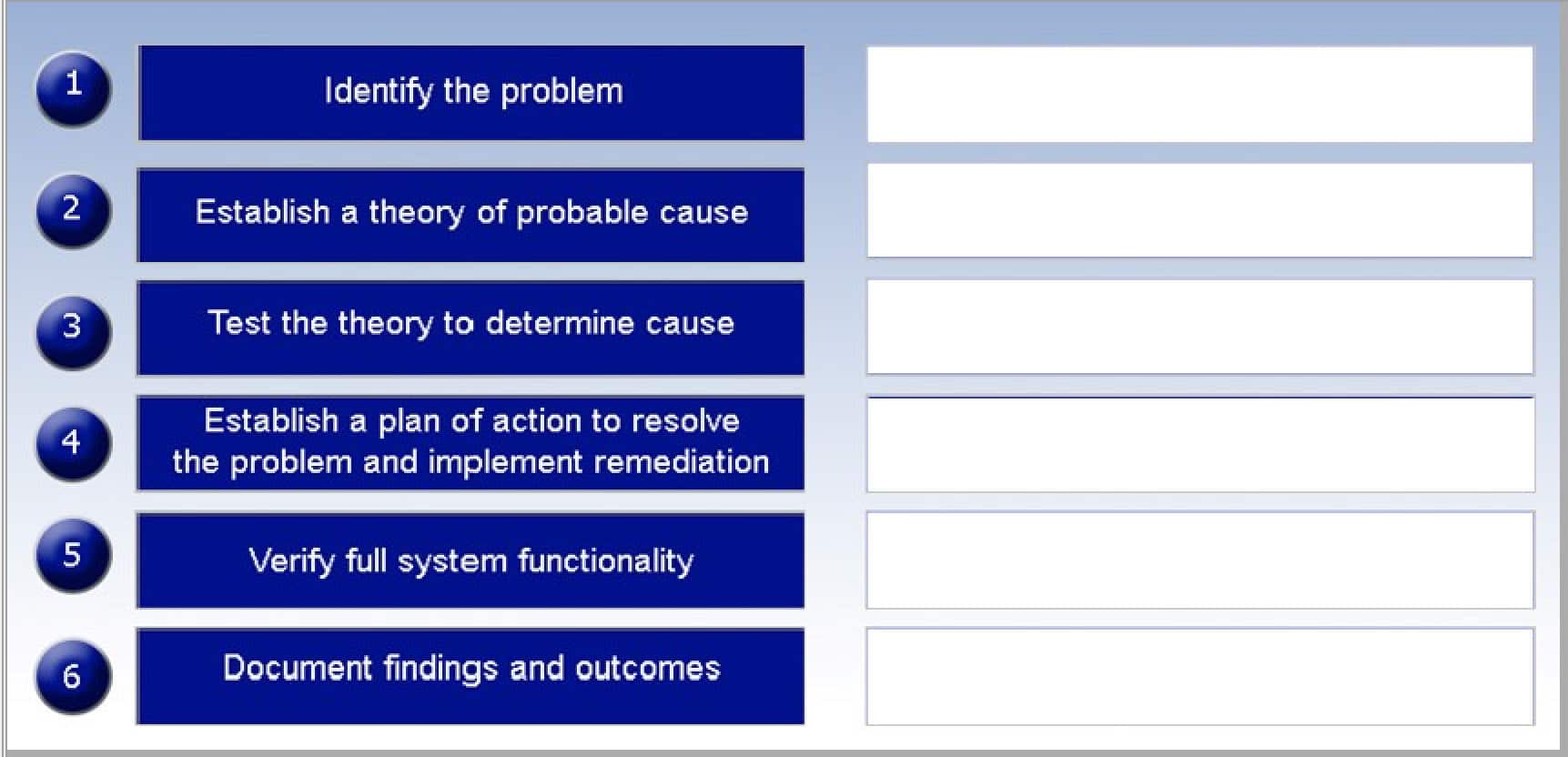
CV0-002 Part 01 Q03 010 -
A company is seeking a new backup solution for its virtualized file servers that fits the following characteristics:
The files stored on the servers are extremely large.
Existing files receive multiple small changes per day.
New files are only created once per month.
All backups are being sent to a cloud repository.Which of the following would BEST minimize backup size?
- Local snapshots
- Differential backups
- File-based replication
- Change block tracking
-
A company has deployed a four-node cluster in a COLO environment with server configurations listed below. The company wants to ensure there is 50% overhead for failover and redundancy. There are currently eight VMs running within the cluster with four vCPUs x32GB each. The company wants to better utilize its resources within the cluster without compromising failover and redundancy.

CV0-002 Part 01 Q05 011 Given the information above, which of the following should a cloud administrator do to BEST accommodate failover and redundancy requirements?
- Ensure hyperthreading is being utilized with physical server CPUs.
- Ensure dynamic resource allocation is being utilized.
- Overcommit memory, and the systems will allocate resources as required.
- Set hard limits for VM resources and turn on hyperthreading.
-
A courier company has virtualized its packing software application. The CSA needs to confirm the deployment is utilizing the correct amount of CPU per virtual instance. After confirming the deployment requirements, the CSA should log into the cloud services portal to ensure that:
- the VMs with the most CPU cores available have been selected.
- smaller VMs are being selected to reduce the total deployment cost.
- the deployment is utilizing the recommended amount of CPUs per VM.
- the alarms on CPU utilization have been enabled.
-
Due to a competitor’s unlimited data plan, a service provider is struggling and wants to transform its business services to be more hosting oriented. A cloud architect is tasked to review current cloud resource capacity and provide recommendations and a plan for better resource utilization. Given the following report:

CV0-002 Part 01 Q07 012 Which of the following is the BEST option for the architect to suggest?
- Downsize by migrating all media services to one server and decommission two servers.
- Downsize by decommissioning servers 2 and 3 and reallocate media servers to hosts.
- Downsize by migrating all media services to one server, add one host server, and decommission one server.
- Upsize the hosting services by turning server 1 into a host server.
-
A cloud administrator is receiving alerts that the disk on several systems is 90% full. Upon reviewing the systems, the administrator determines that the log directory is using 50% of the disk. The company has a 14-day retention policy for all logs. Which of the following is the BEST solution to implement to minimize future alerts?
- Orchestrate a job to rotate the logs and upload to external storage.
- Delete any log files in the directory that are larger than 20MB.
- Archive the existing logs in the directory and upload to external storage.
- Add additional storage space to the log directory for the servers.
-
A company purchased a SaaS CRM application. The signed SLA meets year-round performance requirements. Three months after deployment, customers start reporting a slow application response time. System availability, connectivity, and proper functionality still meet the SLA. Which of the following is MOST likely the reason for the poor response time?
- Incorrect business requirements are invalidating the testing results.
- Bandwidth restrictions are causing poor performance.
- The application version is causing compatibility issues.
- Inadequate documentation is affecting the user interface.
-
A cloud architect created a new delivery controller for a large VM farm to scale up according to organizational needs. The old and new delivery controllers now form a cluster. However, the new delivery controller returns an error when entering the license code. Which of the following is the MOST likely cause?
- A firewall is blocking the port on the license server.
- The existing license is for a lower version.
- The existing license is not supported for clusters.
- The existing license has expired.
-
A multinational corporation needs to migrate servers, which are supporting a national defense project, to a new datacenter. The data in question is approximately 20GB in size. The engineer on the project is considering datacenters in several countries as possible destinations. All sites in consideration are on a high-speed MPLS network (10Gb+ connections). Which of the following environmental constraints is MOST likely to rule out a possible site as an option?
- Downtime impact
- Legal restrictions
- Peak time frames
- Bandwidth
-
A cloud administrator is provisioning five VMs, each with a minimum of 8GB of RAM and a varying load throughout the day. The hypervisor has only 32GB of RAM. Which of the following features should the administrator use?
- Memory overcommitment
- Thin-provisioned model
- Process scheduling
- Hyperthreading
-
Several SaaS providers support identity federation for authentication. Which of the following would BEST assist in enabling federation?
- SAML
- NTLM
- MFA
- PKI
-
A company is interested in a DRP. The purpose of the plan is to recover business as soon as possible. The MOST effective technique is:
- archiving.
- network clustering.
- site mirroring.
- active/active.
-
A new SaaS timecard application that is being tested will be used by all employees at a large corporation. The following process was used to test the application:
1. Three users from each site used the application for three weeks.
2. The new application was used side by side with the existing application.
3. The outputs of the old and new applications were compared side by side.Which of the following requirements did the testing plan confirm? (Select two.)
- High availability
- Performance
- Connectivity
- Data integrity
- Sizing
- Security
-
A cloud engineer is using a hosted service for aggregating the logs for all the servers in a public cloud environment. Each server is configured via syslog to send its logs to a central location. A new version of the application was recently deployed, and the SaaS server now stops processing logs at noon each day. In reviewing the system logs, the engineer notices the size of the logs has increased by 50% each day. Which of the following is the MOST likely reason the logs are not being published after noon?
- The logging directory does not have sufficient storage space.
- The syslog service is not running on the servers.
- The data limit has been exceeded at the SaaS provider.
- There is a cloud service provider outage.
-
A cloud administrator notices one of the servers is using the wrong set of NTP servers. The administrator needs to avoid the same issue in the future but needs to minimize administration resources. Which of the following tools should a cloud administrator deploy to meet this requirement?
- Patching tools
- Monitoring tools
- Configuration tools
- Deployment tools
-
The legal department requires eDiscovery of hosted file shares. To set up access, which of the following is the BEST method to ensure the eDiscovery analyst only has the ability to search but not change configuration or settings?
- PKI
- SSO
- MFA
- RBAC
-
When designing a new private cloud platform, a cloud engineer wants to make sure the new hypervisor can be configured as fast as possible by cloning the OS from the other hypervisor. The engineer does not want to use local drives for the hypervisors. Which of the following storage types would BEST suit the engineer’s needs?
- CAS
- NAS
- DAS
- SAN
-
A cloud engineer deployed an email server in a public cloud. Users can access the email server, but the emails they send cannot reach their destinations. Which of the following should the cloud engineer do FIRST?
- Confirm the email server configuration and reinstall the email server software.
- Validate TLS certificates on the destination email gateway.
- Confirm email encryption service.
- Consult the cloud vendor’s anti-spam policy.